‘I don’t actually think of myself as a minimalist,’ says Edward Monkford, the minimalist architect at the centre of the BBC’s four-part thriller The Girl Before. ‘When you relentlessly eradicate anything unnecessary or imperfect, it’s surprising how little is left.’ Monkford (Daniel Oyelowo) says a lot of normal, relatable things like this, such as: ‘I make it a rule to only look at one thing when I visit a museum. Otherwise you lose focus.’ He’s big on rules. He has designed a house, One Folgate Street, that comes with about 200 of them, and his tenants must comply: no pictures, no ornaments, no carpets or rugs, no books. No drinks coasters, no magazines, no knick-knacks.
The reward for compliance is to live in a minimalist work of art, all poured concrete and polished stone, neat ranks of Hans Wegner chairs around the dining table, a Japanese maple posing like a supermodel in the pebbled courtyard. Monkford is fastidious about the tenants he allows. When Jane (Gugu Mbatha-Raw) applies and is accepted, One Folgate Street has been empty for three years. The previous tenant, Emma (Jessica Plummer), died in the house, falling foul of one of its most striking features: a staircase, purged of fripperies such as bannisters, handrails, or risers, and reduced to nothing but austere steps cantilevered from the concrete wall. A little dangerous, you might think. But is it the stairs that are dangerous, or the man who designed them?
The Girl Before is based on a novel by J.P. Delaney. It divides its time between Jane and Emma, slowly revealing what happened to Emma as the story is pieced together by Jane. Both women share a striking similarity to Monkford’s late wife, who died, with his infant son, on the site of the house while it was under construction. As well as being sparse, One Folgate Street is smart. Its panoptic systems monitor and anticipate the needs of its inhabitants, and occasionally oblige them to fill out psychometric questionnaires. Some of the ominous questions from these tests act as a framing device. Monkford embarks on relationships with both women, relationships as rulebound as the house, with the imperfect relentlessly eradicated. He becomes irate at deviations from this ideal, anything that seems ‘complicated, unnecessary, cluttered’.
You may wonder, given this May Day parade of red flags, why the women put up with any of this. One answer is the most London thing about a drama filled with stately golden-hour drone footage of the capital: the rent is very low, one might say suspiciously low. But there’s also a deadly appeal to One Folgate Street itself. It’s very beautiful – a purpose-built set, but a nicely observed one, with echoes of a number of notable recent houses, such as 6a Architects’ studio for the photographer Juergen Teller. The ascetic lifestyle it offers is hugely seductive, with an almost-supernatural capacity for spiritual renewal. ‘I think it will change us,’ says Emma to her boyfriend Simon (Ben Hardy).
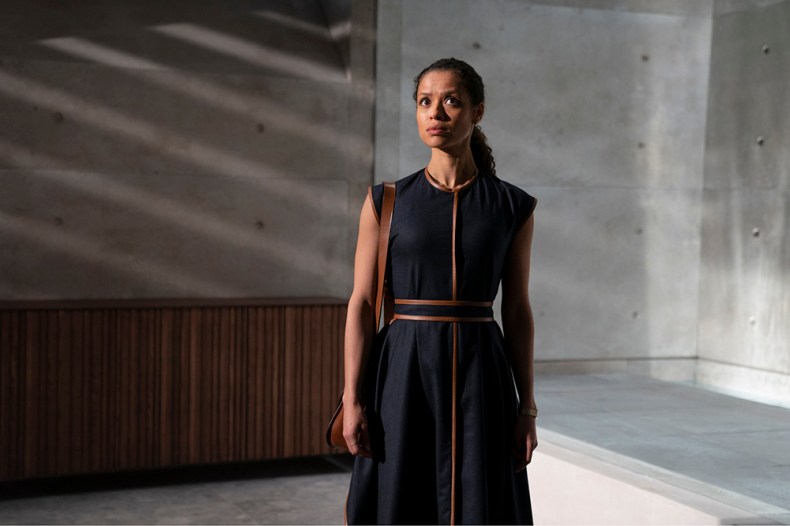
Gugu Mbathu-Raw in ‘The Girl Before’. Photo: © BBC/42/Amanda Searle
Both women are recovering from recent trauma and have good reasons to want to leave their past behind. But they don’t have to be – a perceived relationship between minimalism and spiritual health is written pretty deeply into our culture. I wrote my own novel on the subject, Care of Wooden Floors, a decade ago, and it wasn’t a new observation then. Since then, thanks in part to Marie Kondo, it has become even more widespread, as observed by Kyle Chayka in his book The Longing for Less: Living with Minimalism (2020). Delaney’s story takes this yearning for material purgation and overlays it on the classic gothic romance structure of victim, atmospheric setting, and (secretive, potentially murderous) lord of the manor.
It is also adapted to the demands of the modern thriller. Much like One Folgate Street, it is good looking and extremely bare. Mood is delivered by music and photography. The dialogue is aphoristic and utilitarian, leaving little room for the natural. There are a lot of two-minute meetings in which characters deliver terse bolts of exposition without much prompting or reaction, and then depart, leaving the protagonist frowning into middle distance. Like buildings, books and the films that are derived from them have a structure, one based on expectations. (We expect a front door to open inwards and it is disturbing when it does not.) Once you strip away commercial considerations and a lot of cultural baggage, ‘genre’ is a kind of agreement between the reader and the author: I expect this kind of experience; here you go. These expectations can be very exacting, like Monkford’s many rules, but talented creators can delight readers by subverting them. Gillian Flynn’s Gone Girl (2012), the Hollywood-adapted mega-seller which defined the terrain of the modern thriller, succeeded by knowing the conventions, delighting in them, and inverting them. What a twist! And post-Flynn, the hair-raising, lung-emptying mega-twist has become the central expectation of the thriller – which of course makes it harder to deliver, because the reader goes in second-guessing everything.
For the viewer, then, the fact that The Girl Before invests so much effort into pointing to the fact that Monkford might be a killer, you end up watching trying to figure out why he isn’t a killer, a kind of who-else-dunnit. And from the halfway point on the architectural frame wavers as the plot convolutes and it enters more conventional did-he, didn’t-he territory.
What’s worth noting is that Monkford isn’t just a suspicious architect – he’s suspicious because he’s an architect. Britain is very suspicious of architects, unusually so. It’s a facet of national anti-intellectualism, yes, and suspicion of professions. A creative profession – doubly suspicious. Architects have ideas, you see, they have notions. They want control. But they want to impose this secretive agenda by the back door, by deciding where to put the back door. Imagine if they had a free hand, unrestrained by the demands of their clients and the various authorities, what then? What then? This is the nightmare at the centre of One Folgate Street: life at the mercy of architects.
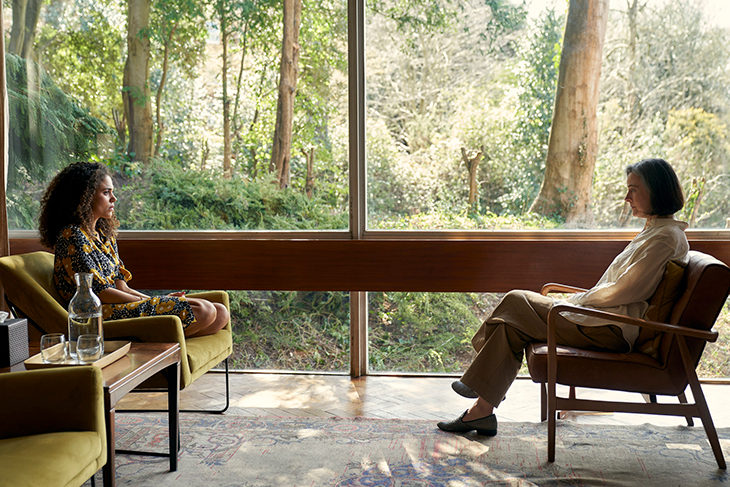
23564952-low_res-the-girl-before Jessica Plummer and Amanda Drew in ‘The Girl Before’. Photo: Robert Viglasky; © BBC/42
This isn’t a new prejudice. It’s at least a century old, and probably older. In Decline and Fall (1928), Evelyn Waugh pours this suspicion into the figure of Professor Otto Silenus, a young German emigre modernist architect – every word of that description is clearly meant to be alarming – commissioned by the wealthy, silly Margot Beste-Chetwynde to rebuild her family house, King’s Thursday, as something ‘clean and square’. The problem of architecture, Silenus tells a journalist, ‘is the problem of all art – the elimination of the human element from the consideration of form’. He continues:
‘The only perfect building must be the factory, because that is built to house machines, not men. I do not think it is possible for domestic architecture to be beautiful, but I am doing my best. All ill comes from man,’ he said gloomily; ‘please tell your readers that. Man is never beautiful; he is never happy except when he becomes the channel for the distribution of mechanical forces.’
Lost in morbid contemplation on the awfulness of man, Silenus becomes rooted to the spot while the journalist moves on. ‘I suppose there ought to be a staircase,’ he muses. ‘Why can’t the creatures stay in one place? Up and down, in and out, round and round! Why can’t they sit still and work?’
Perhaps if staircases were as dangerous as possible, people might be deterred from using them… sadly, not deterred enough in Emma’s case. Of course, in real life architects very, very rarely get to play God, and are constantly restrained by their clients, the contractors chosen by their clients and the various authorities. And that’s only applies to buildings that have architects, which is fewer than you might expect. So One Folgate Street is as much a fantasy as the lonely house on the moors with its brooding widower and secret passages – but it’s an evocative fantasy, which is why it’s so popular.
The Girl Before does capture something under-examined about architecture: its sadness. ‘No children, obviously,’ the agent says to the prospective tenants while listing the rules in episode one. In his book Bleak Houses: Disappointment and Failure in Architecture, Timothy Brittain-Catlin talks about sadness, alongside the various other negative emotions that inform architecture, but we rarely discuss. ‘After all,’ he writes, ‘in some cases architecture is born out of desperate feelings, feelings that go as deep as any others in life, and more often than not this desperation is born out of a downward trajectory, a recognition that something is not right.’
To indulge in a Monkford-esque aphorism, commissioning a house is a lot like committing a murder: not a lot of people do it, it’s very difficult, it’s very risky, and it tends to be the result of powerful emotions, not well understood by their holder. One ends up hoping that Monkford might be the killer, because otherwise he will have gone to a lot of trouble and not even gotten a decent murder or two out of it. Another question is a more pressing and architectural one: how come we never get to see where Monkford lives? No one even asks. I’m guessing wall-to-wall Cath Kidston. Now that really would be a twist.
The Girl Before is available on BBC iPlayer.
Unlimited access from just $16 every 3 months
Subscribe to get unlimited and exclusive access to the top art stories, interviews and exhibition reviews.

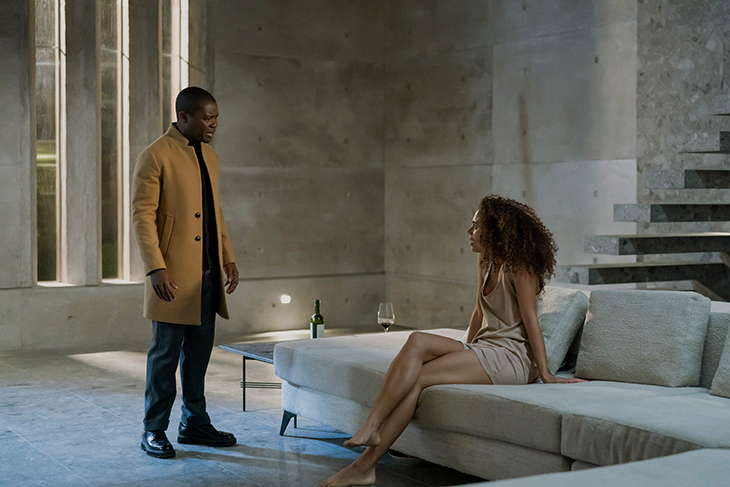
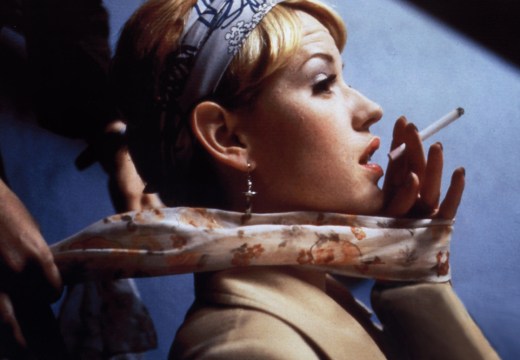

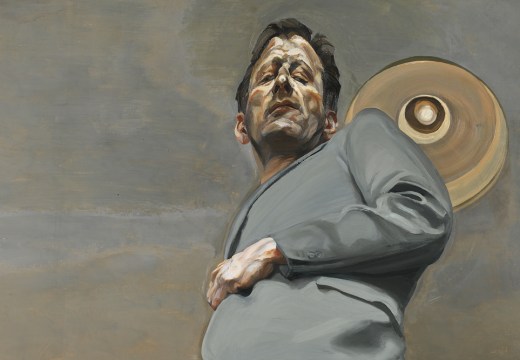









![Masterpiece [Re]discovery 2022. Photo: Ben Fisher Photography, courtesy of Masterpiece London](http://www.apollo-magazine.com/wp-content/uploads/2022/07/MPL2022_4263.jpg)
It’s time for the government of London to return to its rightful home